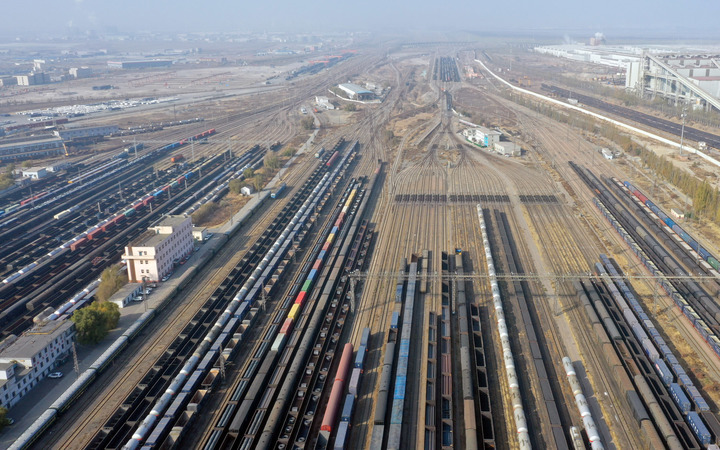BEIJING, Nov. 8 (Xinhua) -- China's energy crunch is expected to alleviate as the country's multiple measures to boost supply and rein in price hikes have started to take effect, securing sufficient energy for factories and households for the winter.
China's coal output has sustained its growth momentum since mid-October. The maximum daily output of coal has hit 11.93 million tonnes, a record high for recent years, said the National Development and Reform Commission (NDRC), the economic planner.
The coal stockpiles of the country's power producers have also rebounded, the latest official data shows, with power producers nationwide reporting a total of 117 million tonnes of coal in their inventories as of Saturday, an increase of about 40 million tonnes from the end of September.
Coal for power generators and heating suppliers is guaranteed as mid to long-term coal supply contracts have roughly covered demand, the economic planner said.
Increased coal output and inventories at power plants will help drive down the soaring coal prices, the NDRC said, noting that prices are expected to continue their decline as production and inventories rise further.
Energy prices have surged globally since the start of this year amid a supply crunch. In China, energy strains caused power outages in September, hitting families in some regions and forcing factories in the world's second-largest economy to halt production.
Following the September power blackouts, the country stressed the importance of efforts to prioritize energy sufficiency in several meetings. At an executive meeting of the State Council in late October, China ordered concerted efforts to ensure coal production and transportation, increase the gas supply and crack down on speculative activities in the market.
Centrally administered state-owned enterprises (SOEs) were important coal producers, with their coal output accounting for nearly a quarter of the country's total. During a symposium last month, central SOEs were ordered to increase the supply of coal and natural gas to ensure power generation, while taking the lead in stabilizing coal prices.
To unleash more production capacity, the National Mine Safety Administration has streamlined the approval process for coal producers to put qualified mines into operation. So far, the administration has added some 153 coal mines to its emergency supply list, a move expected to increase production capacity by 220 million tonnes per year.
In addition to expanding output, China has also moved to facilitate coal transportation in key areas and on key routes. The amount of coal transported via railways reached a record high in recent years, after the NDRC urged rail and shipping companies to fully tap their transport capacities and prioritize orders from power generators and heating suppliers.
Spot prices and coal futures have slumped rapidly since mid-October as long-term supply contracts cover more coal producers and supervision strengthens to rein in excessive speculation.
In response to recent diesel shortages in some regions, China's major oil producers have worked to increase the oil supply through means such as adjusting the production process. The diesel supply recorded a month-on-month rise of nearly 20 percent in both September and October.
With these measures underway, the State Grid Corporation of China, the country's largest state-owned utility company, on Sunday said that power supply and demand in areas operated by the company have returned to normal, with considerable reductions in the scale of power curbs and the electricity gap.
There is no problem in ensuring household power and gas supply, the NDRC said, shrugging off concerns over an energy crunch during a winter that is forecast to be colder than usual. Enditem




 A single purchase
A single purchase









